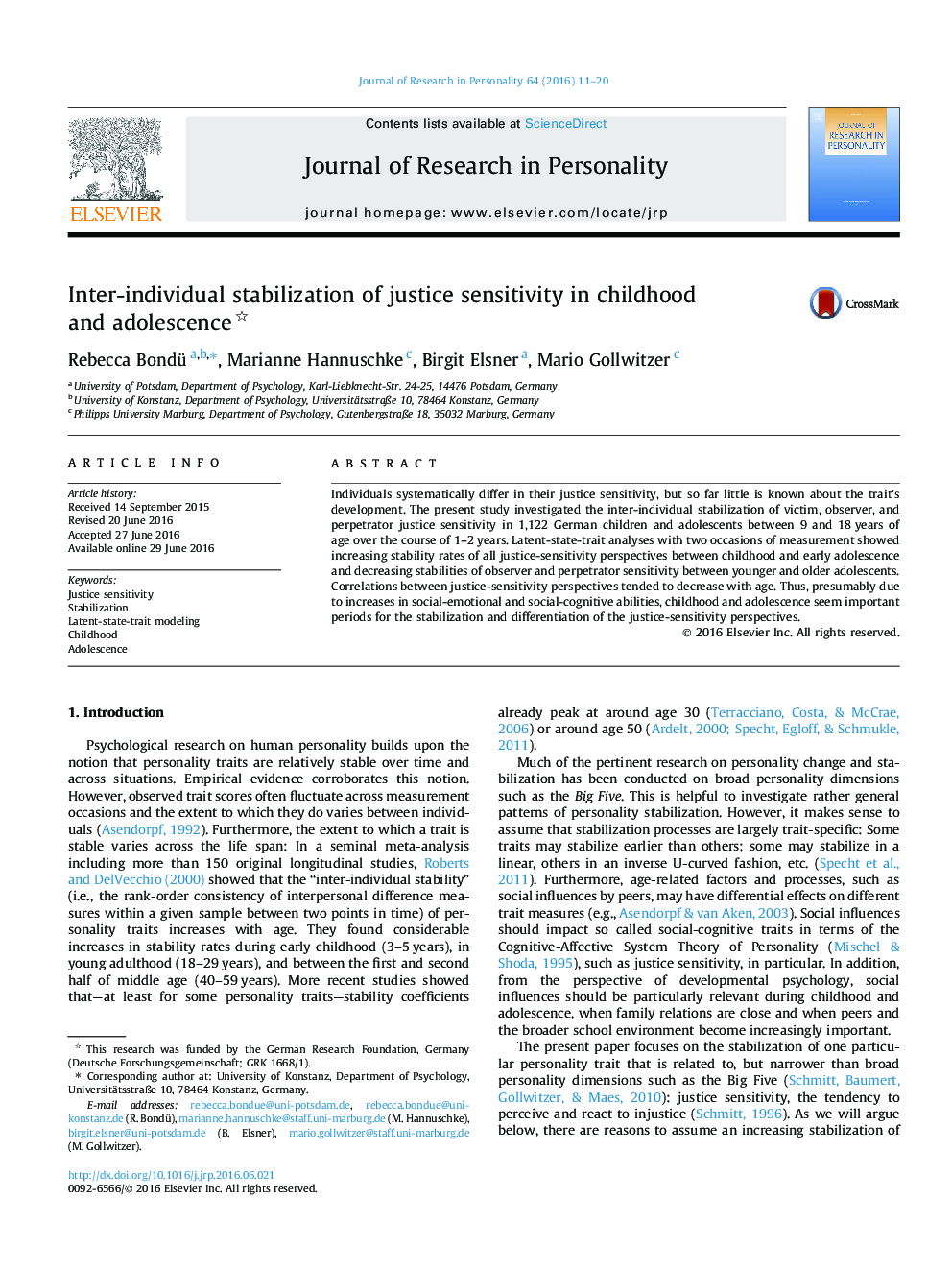| Article ID | Journal | Published Year | Pages | File Type |
|---|---|---|---|---|
| 951207 | Journal of Research in Personality | 2016 | 10 Pages |
•The study examines the stability of justice sensitivity in childhood and adolescence.•Latent-state-trait theory distinguishes “true” instability and measurement error.•Stability of justice sensitivity increases from childhood to early adolescence.•Stability of justice sensitivity decreases in late adolescence.•Justice-sensitivity perspectives tend to get better differentiated with age.
Individuals systematically differ in their justice sensitivity, but so far little is known about the trait’s development. The present study investigated the inter-individual stabilization of victim, observer, and perpetrator justice sensitivity in 1,122 German children and adolescents between 9 and 18 years of age over the course of 1–2 years. Latent-state-trait analyses with two occasions of measurement showed increasing stability rates of all justice-sensitivity perspectives between childhood and early adolescence and decreasing stabilities of observer and perpetrator sensitivity between younger and older adolescents. Correlations between justice-sensitivity perspectives tended to decrease with age. Thus, presumably due to increases in social-emotional and social-cognitive abilities, childhood and adolescence seem important periods for the stabilization and differentiation of the justice-sensitivity perspectives.
